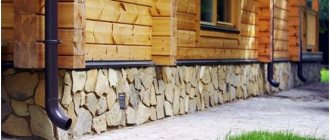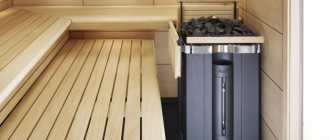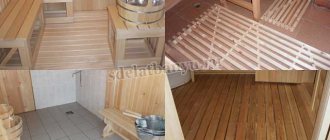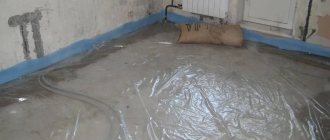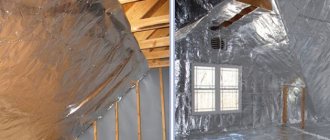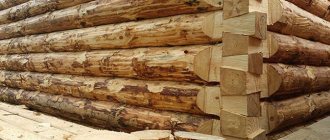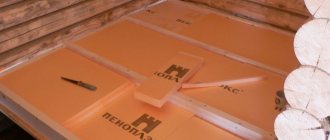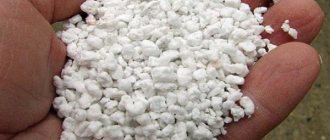A flat floor in a house clearly illustrates the correct approach to choosing a leveling layer. As a rule, floor leveling was previously resorted to using particle boards or fibreboards. Today, a material has appeared that is much more efficient in operation and installation than those indicated - gypsum fiber sheet.
GVL is used for finishing and is produced by pressing using gypsum powder and cellulose. A distinctive feature of this finishing material is that it does not contain a cardboard sheet coating and is homogeneous in its structure. You can install GVL on a wooden floor yourself. Due to the reinforcing properties of fluffed cellulose, the density of gypsum fiber board is much higher than that of gypsum board, which makes it possible to improve its performance characteristics and the quality of finishing work.
What it is
Often, when choosing a finishing material, the consumer has the question of what is gypsum fiber board for the floor. As the name suggests, it is a gypsum fiber sheet. However, unlike the standard well-known drywall, it does not have an outer paper shell. The structure of the slab is homogeneous. The basic necessary properties are given to it during the following production process:
- The main components - gypsum, cellulose and various modifiers are mixed evenly.
- The mixture is filled into the form.
- The workpiece is saturated with water and fed into the press installation.
- The formed slab is dried - the material is brought to a certain degree of humidity.
- The finished product is transferred to the warehouse.
Another important difference between the material and conventional drywall is its higher strength, water resistance and density. Thanks to this set of properties, the GVL slab is used not only and not so much for finishing, but as a substrate for a coating, for example, laminate or parquet, and also as a rough version of the floor and even as a sound insulator.
GVL close-up Source company-megapolis.rf
How can I level it under laminate?
If the backfill is done under the laminate, then the leveling process must be approached very responsibly. Laminate is afraid of moisture. Moisture should either not get on this surface at all, or a good waterproofing layer should be placed under the layer of material. GVL for laying under laminate is taken with waterproofing qualities.
Waterproofing is laid together with sound insulation, which is also a plus.
How to level:
- the prepared surface is covered with dry mixtures (expanded clay, sand or perlite);
- the resulting depressions are filled with cement-sand mortar;
- a polyethylene film is spread on the surface;
- sheets are laid on top of it;
- lay the sheets in two layers, fastening them with self-tapping screws.
Application area
Taking into account its versatile qualities, GVL can be called a universal building material. The following areas of application exist:
- Formation of dry floor screed.
- Use as a lining under the finishing coating - linoleum, parquet, etc.
- Creation of interior partitions.
- Construction of a subfloor on a wooden sheathing over a concrete floor.
- GVL flooring sheets can be part of the heat or sound insulating layer of various house structures.
- Installation of a heated floor system.
- Design of fireproof communication boxes.
- Formation of fire-resistant surfaces in bathhouses and boiler rooms.
- Creation of moisture-resistant finishes in bathrooms, saunas, showers.
Advice! When choosing GVL, first of all, it is necessary to take into account the operating conditions. For example, for a bath or sauna, an option with increased resistance to water and fire is suitable.
GVL partitions indoors Source guruotdelki.ru
Liquid glass coating for plywood base
In order to use this method, we first lay sheets of plywood or chipboard treated with a protective impregnation on the subfloor. Using a wide brush, apply a layer of latex to the surface, onto which we immediately lay a painting mesh. After the latex has dried, securely fasten the mesh to the base with several self-tapping screws.
Plywood additionally levels and strengthens wooden floors
Next, apply a solution of liquid glass, coarse sand and water (ratio 2:2:1) to the resulting surface. We wait until the composition dries, prime it and begin laying the tiles.
Characteristics
Standard gypsum fiber sheets for flooring are characterized by the following parameters:
- Strength – does not exceed 1.2 thousand kg/m³.
- Density – over 5.5 MPa.
- Humidity – less than 1%.
- Hardness index – 22 MPa and more.
- Thermal conductivity value is from 0.22 to 0.35 W/m × °C.
The dimensions of the standard plate are within the following values:
- Length – 250 cm.
- Width – 120 cm.
- Thickness – 10 mm.
In this case, the values of physical parameters may be different - depending on the wishes of the customer or the characteristics of production. For example, small-format versions are available in sizes 120 by 60 or 150 by 50 cm.
Tips for using gypsum fiber sheets
Experts recommend adhering to the following tips when leveling the GVP floor:
- Trimming gypsum fiber boards is best done with an electric jigsaw. You can use other available tools, but this tool will make the edges perfectly smooth and straight.
- To prevent the sheets from sagging during operation, you need to cut off the folded edge of the sheets that are located close to the walls.
- Poorly glued slabs are not monolithic enough and make a ringing sound when walking, so the folds need to be covered with a generous amount of glue.
- Screw the self-tapping screws to a depth of at least 1 mm. If they stick out strongly on the surface, the sheets become deformed when walking.
- Only dry amorphous insulation should be used. Moisture from expanded clay will be absorbed by the gypsum fiber, which can lead to its deformation.
The methods for leveling the GVP floor are approximately the same. You need to choose high-quality sheets with waterproofing characteristics. Laying the material does not take much time and effort, and the surface after completion of the work will be smooth and durable.
Source
Varieties
Gypsum fiber boards of the type in question differ primarily by area of application into the following categories with appropriate markings:
- Standard - GVL . For ordinary premises.
- Moisture resistant - GVLV . For humid environments.
- Fire resistant - GVLO . With increased fire resistance.
- Moisture-resistant - GVLVO . For finishing in areas with high air humidity and elevated temperatures.
GVL for the "warm floor" system Source pol-exp.com
GVL, classified as fireproof, are classified into the following subcategories:
- Non-flammable - G1.
- Do not produce smoke when burning - D1.
- Non-flammable - B1.
- Low toxic - T1.
Due to the fact that it does not support the combustion process, the material is recommended for covering wooden structures of all types - when building houses using frame technology, creating partitions or finishing in wooden structures, including subfloors on joists made of boards or bars.
Note! GVL floor slabs allow not only leveling the surface, but also effectively insulating walls and ceilings from sound and saving heat in the room. At the same time, the structure of the material does not interfere with the passage of air and moisture, and therefore ensures a healthy microclimate in the house.
Finishing a house from GVL Source stroy-podskazka.ru
See also: Catalog of companies that specialize in finishing materials and related work
Features of work
When installing a tiled floor, do not forget about the tile corners - trim (these are special plastic corners that can be purchased at any construction and hardware stores). With their help, there will be no problems with laying tiles.
We should also not forget about the difficulty in performing some finishing work, namely, corner laying of tiles. For beginners in construction and installation work, the classic method of laying joint to joint is suitable, where the tiles, if necessary, are cut off. However, it will not be possible to avoid all the difficulties even with this technique, since corners with trimming of 45 are common, and therefore you cannot do without a special machine - a tile cutter.
If you study all the intricacies of the classic technology of laying tiles, the process will go much faster, and even such issues as laying corners and turns will not raise so many doubts.
Video on the topic: Laying tiles in the bathroom on drywall with your own hands
Selection of questions
- Mikhail, Lipetsk — What discs should I use for cutting metal?
- Ivan, Moscow - What is the GOST for rolled sheet steel?
- Maxim, Tver - Which racks for storing rolled metal products are better?
- Vladimir, Novosibirsk — What does ultrasonic processing of metals without the use of abrasives mean?
- Valery, Moscow - How to forge a knife from a bearing with your own hands?
- Stanislav, Voronezh — What equipment is used for the production of galvanized steel air ducts?
Advantages and disadvantages
The formation of a number of material properties is determined by the production technology and the modifying components included in its composition. Thanks to this, GVL is homogeneous in structure, dense and has the following set of positive qualities:
- Possibility of installing any heating system under the casing - both electric and water.
- Minimum thickness with maximum strength, sound and heat insulation.
- The installation technology is all-season and is allowed at negative ambient temperatures - since it does not include work with wet mixtures and solutions.
- The combination of strength, flexibility and high density properties, which greatly facilitates installation while maintaining useful performance characteristics.
- Moisture-resistant gypsum plasterboard for floors is significantly superior to plasterboard in its resistance to moist air and direct contact with water splashes. It can be installed in rooms where water splashes fall on the floor.
- The structure of the material does not change even after strong heating.
- After installation, the slabs do not creak.
Scheme for laying gypsum fiber board on the floor Source chudopol.ru
- Thanks to the combination of strength and elasticity, the surface can withstand heavy weight, shock and various mechanical loads.
- The material's high resistance to elevated temperatures prevents the spread of fire and prevents fires.
- Thanks to the fibers included in the composition, the material does not collapse during sudden temperature changes.
- In terms of areas of application, the material has virtually no restrictions or contraindications.
- High level of environmental cleanliness. Contains only natural and safe ingredients.
However, with all the obvious advantages and superiority over conventional drywall, gypsum plasterboard is not without some disadvantages:
- High specific density, significantly heavier product. So, just one standard sheet weighs about 17-18 kg. This complicates the installation procedure. More workers are needed.
- Despite the high levels of operational flexibility, the product is not without practical fragility. If installed improperly, the sheet can easily be broken or crumbled, especially at the edges and corners.
GVL slabs break easily during installation Source ekb-pol.ru
Features of the gypsum fiber base
Gypsum fiber sheets are the same drywall, only in a more improved form. These coatings have a number of identical properties. However, there is a difference and it concerns the structure: GVL does not have a double-sided frame with cardboard. There are reasons for this. In this case, strength is imparted to gypsum through reinforcement with cellulose components, as well as through special additives with moisture resistance and fire resistance properties (these characteristics of gypsum fiber board are higher than those of gypsum board).
The strength of gypsum fiber board is an order of magnitude higher than that of gypsum plasterboard, and therefore gypsum fiber sheets are recommended for use when constructing a leveled dry screed base. When a dry screed needs to be done in a bathroom or toilet, then a special moisture-resistant GVLV is used.
To lay a high-quality floor with your own hands, it is important to follow the technology and have an idea of how to lay wall or floor tiles. Creating a new floor involves the following sequence of actions:
- dismantling the old coating, repairing the base;
- arrangement of dry screed made of gypsum fiber board;
- laying tiles;
- grouting joints.
It is possible to lay a sheet of gypsum fiber board on top of a wet screed. However, such work is difficult and is almost never used in modern home finishing practice.
Installation technologies
Despite the apparent simplicity of the material, the procedure for installing gypsum fiber boards is quite complex and has many nuances. It is necessary to take into account both general requirements for the base and specific ones - in each installation option. Let's look at them in more detail.
Laying gypsum fiber board on an expanded clay cushion Source sense-life.com
General requirements for foundation and installation
The versatility of GVL slabs is also evident in the installation methods. They can be mounted either on a solid, level base or on beams with a sufficiently large gap from each other. At the same time, special requirements are imposed both on the surface on which the material will be laid, and on the material:
- The height difference should not exceed more than 2 mm for every 2 meters of the straight line of the base.
When laying soft finishing - linoleum, vinyl, carpet - small and shallow unevenness is allowed. However, leaving such defects for installation of parquet or laminate is extremely unacceptable. At a minimum, this threatens the subsequent spreading of the finish and the divergence of its locks.
- When installing on a non-solid base or on joists/lathing, it is necessary to use gypsum fiber boards of increased density and maximum thickness.
As an option, laying sheets in 2 layers is allowed. In this case, the modification of the material must necessarily be GVLV - moisture resistant, and the seams of the lower layer must be covered with the top sheet.
Laying gypsum fiber sheets on joists Source blogspot.com
- Immediately before laying, the ends of the slabs must be glued - coated with an adhesive base.
If installation takes place on a rigid base, for example, a concrete floor, it is allowed to use PVA, and if on joists or insulation, a sealant that retains elasticity after complete drying is allowed.
Important! The gaps between the gypsum fiber board sheets after installation should not exceed 1.5-2 mm. If the finishing has a soft base, then even smaller gaps between the slabs must be puttied.
Do I need to level it?
Bulk
Leveling the floor in the case of bulk material is necessary for uneven surfaces. Smooth floors may also require attention, as the dry coating may be unevenly distributed over the surface. Installed beacons can interfere with installation if they are placed incorrectly on the surface.
For leveling, you can use a laser or water level. It must be installed before and after backfilling. This is necessary to double-check the evenness of the backfill surface.
Without backfill
Without backfilling, you need to take a more thorough and careful approach to the process of leveling the floor. The crooked the base and the worse the preliminary work on preparing the surface was done, the more attention needs to be paid to the evenness of the GVP when laying.
Video description
Video instructions for creating sound insulation from GVL on a concrete floor:
Laying on a wooden floor
Installation of gypsum fiber sheets on a wooden floor or joists must be carried out with leveling the surface and subsequent checking the level, as well as with preliminary antiseptic treatment of all wooden structures.
Often, the option under consideration involves laying gypsum fiber board on a wooden floor under the tiles. Then, after fixing the material, a special glue under the ceramics is applied to its surface, and then its stage-by-stage installation is carried out. In this case, there is no need to fill the gaps formed between the sheets during installation - since the adhesive base seals them.
Prefabricated Flooring on Cushion
Often, to level the surface with large differences in height or to give the ceiling maximum thermal insulation, granular materials are used, for example, expanded clay. The main advantage of the method is the maximum speed of installation and the absence of the need to work with solutions. In addition, this filler is quite lightweight and can be used on a wooden base.
Additional recommendations from professionals
Many years of professional experience shared by specialists indicate that some manipulations should be done in a certain way, and not in any other way. After all, the secret to successfully creating a high-quality floor lies precisely in such nuances.
Tying GVL sheets together will provide them with greater resistance to stress. Fixing with self-tapping screws will allow you to hold on better; Before laying the tiles, the gypsum fiber flooring is kept indoors for about 3 days, and only then covered with a primer; When buying tile adhesive in a store, be sure to find out its capabilities regarding gypsum fiber; Laying tiles begins only on a completely dry primer. They do this using a hammer, beacons and a spatula.
In this case, all the rules described above are taken into account.
These are all the nuances that you will encounter in your work.
Video description
Video about installing gypsum plasterboard on expanded clay:
In this case, a lathing must be created to fix the gypsum fiber. Its depth will correspond to the thickness of the backfill layer. An important feature of using this method is maintaining a gap around the entire perimeter of the room - between the slabs and the walls. Its presence is due to the need for ventilation and the natural vapor permeability of wooden structures.
Laying tiles on GVL
In rooms with high humidity, tiles are usually installed using gypsum fiber board. In this case, the following conditions must be met:
- The floor must have additional waterproofing.
- If the slabs are laid on logs or a base made of boards, they should not sag during operation.
- It is necessary to use elastic glue as a fastening base for ceramics.
- The seams of the laid tiles and gypsum fiber sheets should not match.
Note! An improperly prepared base can cause poor-quality installation of gypsum fiber boards and their subsequent damage during operation. The smallest grains of sand, dirt stuck in cracks, and hidden irregularities can cause significant defects in the floor in the near future after its completion.
Procedure for laying gypsum fiber boards on wood floors
Laying gypsum board slabs is a painstaking process that requires diligence and precision.
To avoid various damage to the gypsum fiber, it should be placed in a horizontal position during cutting. A saw - a hacksaw or a construction cutter - is suitable for cutting. Laying slabs can be divided into the following stages:
- Fixing the edge tape. It is mounted around the perimeter of the room and is designed to absorb impact noise. In addition, this tape is a good compensator for deformation changes due to temperature changes;
- After the tape is fixed, a vapor barrier is installed on the ceiling. Be sure to lay the strips of insulating material overlapping so that there are no gaps;
- The surface of the vapor barrier is covered with an expanded clay layer;
- Guides are set according to the level of the embankment and the base is leveled using a rule;
- The expanded clay layer is compacted. During this action, it is worth paying increased attention to corner spaces and places near walls;
- The first layer of gypsum fiber boards should begin to be laid from the corner of the opening. After installing the initial layer, an adhesive composition is applied to it, on which the next layer is laid on top. This layer must be laid in the opposite direction to the first;
- According to the installation technology, the top layer is tightened with fasteners and glued along the folds;
- The final layer is puttied, since the surface needs priming. The primer must be compatible with the adhesive.
During assembly of the final row, the slabs are adjusted to size. For pruning, a hacksaw is usually used. If the leveling bedding is more than ten centimeters thick, it is necessary to lay a subfloor consisting of three rows of gypsum plasterboard, the last of which must be the same in thickness as the first two.
If you plan to install a heated floor, then the installation of a dry screed should begin with laying layers of expanded polystyrene, but if it is planned to install a base floor, the insulating material is laid over the bedding.
Briefly about the main thing
Gypsum fiber boards are made from gypsum, cellulose and various fillers. They have a homogeneous structure, do not contain cardboard and are highly durable and moisture resistant.
Laying gypsum fiber board on the floor has the following purposes:
- Dry floor screed.
- Lining for finishing coat.
- Interior partitions.
- Rough floor.
- Heat and sound insulation.
- Formation of heated floors.
- Creation of fireproof structures and surfaces.
- Moisture resistant finish.
In this case, GVL can be standard, moisture-resistant, fire-resistant and moisture-fire-resistant. Gypsum fiber boards are durable, resistant to temperature changes, do not burn, are environmentally friendly, resistant to mechanical and weight loads, but require careful installation, are quite heavy and expensive.
They can be mounted in various ways - on a concrete base, wooden floor or logs, in a prefabricated structure on a pad of insulation and under ceramic tiles. The installation procedure is quite complex and requires strict adherence to technological requirements. Therefore, it is better to entrust it to professionals.
Ratings 0
How to reconcile ceramics with a wooden base?
Due to the organic origin of wood, it cannot be classified as an “unshakable” building material. It shrinks from lack of moisture, swells from excess. A new wooden floor still settles for one and a half to two years after construction, and even after the expiration of the period set for post-construction shrinkage, movement still occurs. Movement imperceptible to the human eye negatively affects the solidity of the tiled surface. Structural connections are broken, tiles peel off and crack. As a result, not only all the work goes down the drain, but also a lot of money invested in finishing.
This means that the task of a home-grown finisher is to create a kind of damper layer that absorbs the characteristic movement of wooden elements. The hard outer part of this layer must be turned towards the ceramic coating, and the elastic rear should be exposed to the shocks and blows of the wood. In addition, the wood hidden underneath needs to breathe, otherwise it will quickly rot, overcome by fungi and mold.
General conclusion
Leveling the floor with drywall is a very good idea. The process is not very simple - although the first impression will most likely be that way. There are many different little things that need to be taken into account; it is quite possible that you will not be successful the first time.
This is especially true for finishing work. For example, if the floor is made of plasterboard, you should not glue expensive piece parquet onto it. But you can safely lay ceramic tiles! If you study the technology from the very beginning, there will be a minimum of problems in the work and the finished result will impress not only the owner himself, but also all the guests.

